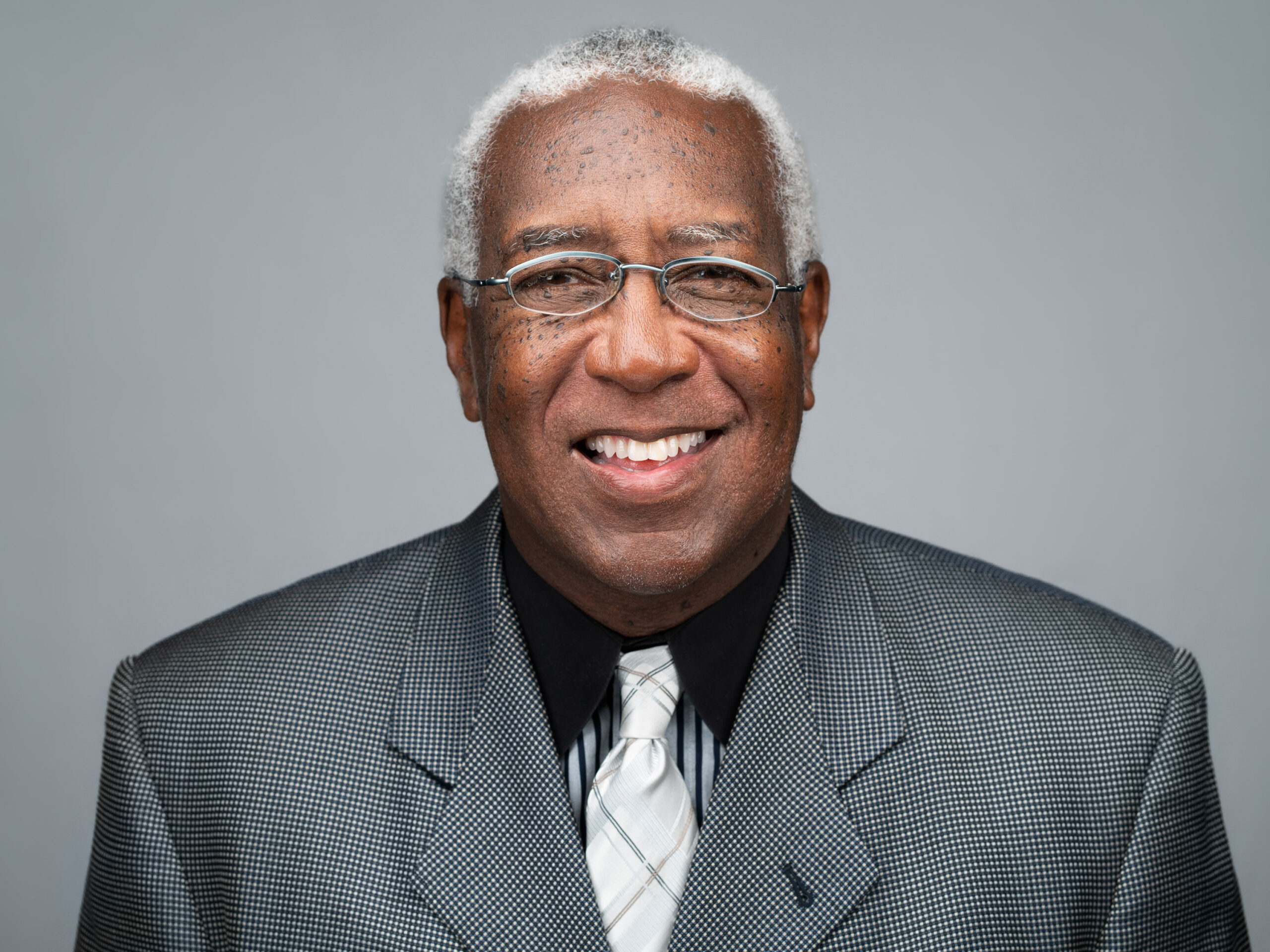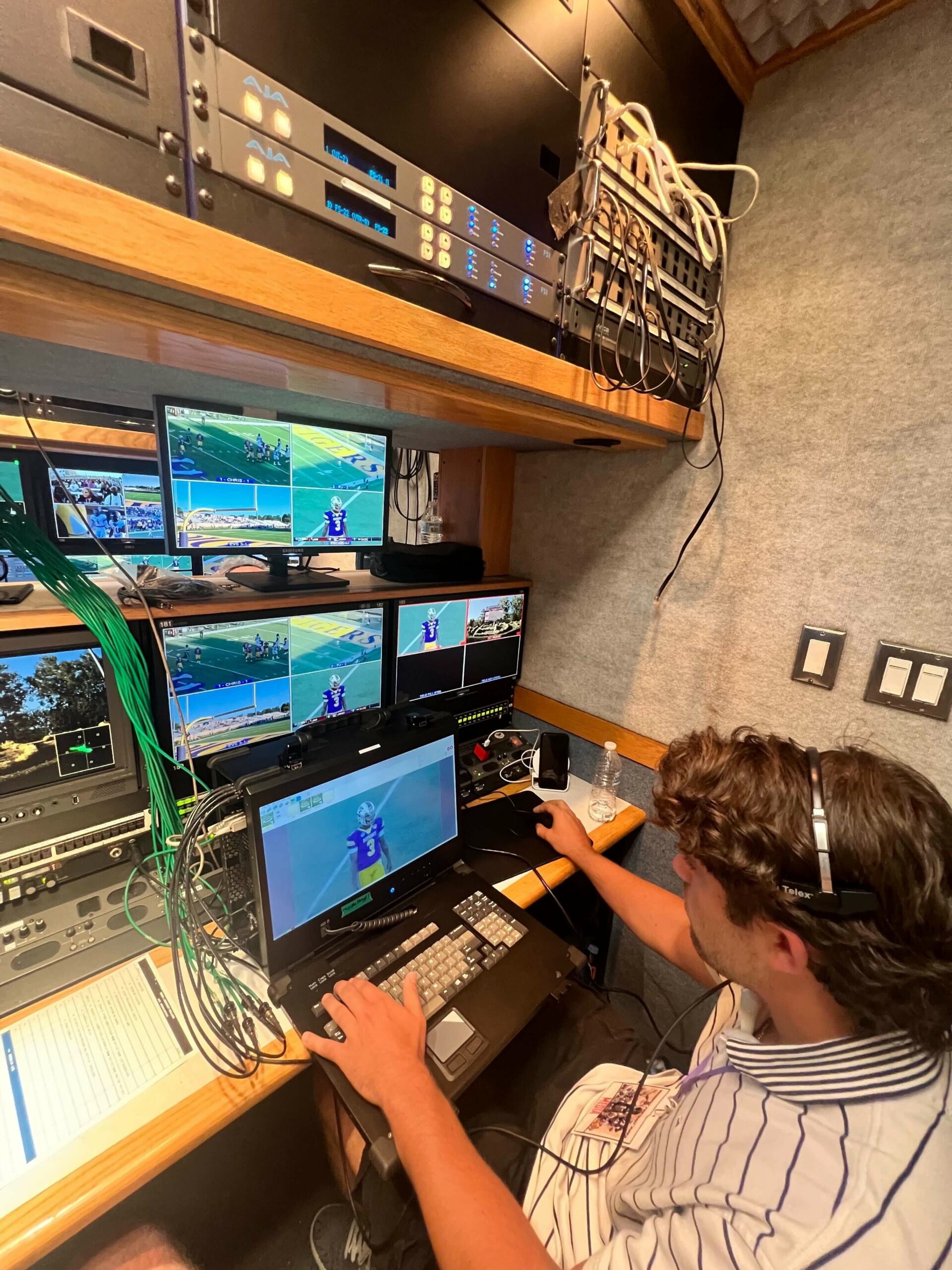HBCU GO President Curtis Symonds: Improved Football, Hoops Productions Are Paying Dividends
The network emphasizes the culture, is adding spring sports
Story Highlights
With 10-year deals with the CIAA and the SWAC nailed down and other deals close to fruition, HBCU GO President/Co-Founder Curtis Symonds and the production teams behind football and basketball coverage are focused on delivering the goods for fans and alumni as HBCU sports grow in importance.

HBCU GO’s Curtis Symonds: “We have to be well-rounded. A lot of doors are open, and we just have to see if we can start filling them a little better.”
“This year,” says Symonds, “we’ve got top-notch directors and good camera people so we’re not missing a beat and have a good flow going. It’s important to get all the right shots, making sure we’re hearing the right things, making sure we’re covering the band, the dancing, all of that culture. It’s important.”
Among the new hires are Supervising Producer Jacqueline Coleman, formerly with the Washington Nationals, who Symonds says has turned the production side around. Also new to the organization are Senior Coordinating Director Renardo Lowe, formerly of Turner Sports; Gina Holland, who worked with Symonds at BET and Continental Cablevision in Ohio; and Curt Simmons, who oversees all production operations.
The 10-year media-rights partnership with the Central Intercollegiate Athletic Conference (CIAA) grants Allen Media Group–owned HBCU GO rights to cable, linear, streaming, broadcast, VOD, and pay-per-view coverage of all CIAA team sports through June 30, 2032. The rights cover regular-season football, men’s basketball, and women’s basketball, Olympic sports, and the football championship game.
“This media deal with AMG is a game-changer for the CIAA and unprecedented in Division II,” said CIAA Commissioner Jacqie McWilliams-Parker in announcing the deal in early September. “We will expand the CIAA Sports Network platform through HBCU GO to give greater exposure for our 13 member schools and their student-athletes. I am excited about the jobs being created, the talent identified, and the stories to be told through a platform developed to give HBCUs well-deserved and long-overdue exposure. This is a great day for CIAA.”
Symonds’s plan for HBCU GO was to first get quality sports programming (via deals like the CIAA pact) and then make the move to football doubleheaders. Now it’s about branding all over the campuses.
“I want to mirror very closely with the big dogs, the broadcast networks like ABC, CBS, NBC, ESPN, and Fox,” he explains. “[AMG founder/owner] Byron Allen has allowed me to push that needle, and it has helped us because, now more than ever, people are seeing the quality.”

Adding Chyron telestration and first-and-10–line graphics has lifted the production quality of HBCU football productions.
One big step was adding, for football, Chyron’s Virtual 1st and PAINT Solutions. Using Chyron’s state-of-the-art Virtual 1st system and an onsite operator, along with the company’s robust yet intuitive PAINT telestration tool, HBCU GO has elevated the quality of its coverage to rival that of major network broadcasts.
“With the Virtual 1st system, every play looks fantastic,” says Symonds, “and, with Chyron’s PAINT telestration tool, we unleash the full potential of our knowledgeable commentary team. It’s a powerful combination that brings added depth and dimension to every game-day production.”
What also helps, he adds, is that two large broadcast-production trucks are deployed. Holland plays a big part in making sure the trucks are used to maximum advantage.
“She has all the connections,” Symonds notes. “And, with two great trucks, there is no drop-off [compared with the other networks]. The truck is well set up and ready to go.”
Phoenix-based BitFire also has played a part, being on board since last year for HBCU basketball programming (its two master-control rooms were used to produce 70 basketball games) as well as for a studio show.
“BitFire took care of us very well,” says Symonds, “and helped us out tremendously last year.”
Symonds, who was inducted into the B&C Hall of Fame last year, worked at ESPN and BET, transforming both organizations. From 1983 to ’88, he was at ESPN Inc., working in its Chicago office. He began as local–advertising-sales consultant and, within a year, was promoted to director of affiliate marketing for the Midwest region. In 1988, he joined BET, serving as EVP of affiliate distribution and marketing until 2001. His experience helping get BET off the ground is paying dividends at HBCU GO.
“I would walk on the street and ask people if they knew anything about BET,” he recalls. “They would say, ‘What are you talking about?’ I took that same approach with HBCU, crawling at first, but it’s starting to get bigger and bigger. The momentum is picking up. Now it’s about showing up in a lot of different places and driving the brand. Now people come up and say, ‘I’m watching your channel. Looks good.’ So we’re making the right steps. We’ve got a lot of work to do still, but I think we’re getting there.”
One of the key advantages HBCU GO offers schools and conferences is that it has the airtime and energy to focus on putting the schools, athletes, and sports front and center.
“We are getting some great response from our presidents and the community on the coverage of HBCU GO,” Symonds says. “Other people are doing the games, but no one has built a true destination. People know they can come to HBCU and get a football game at 1 p.m. and 4 p.m., and that was the goal we wanted. We’re pushing the culture and entertainment side as alumni come out for the bands and the stepping from the fraternities and sororities. We want to push culture because the edge we have is, we’re driving the culture more than anyone else is.”
Things like showing nearly the entire halftime marching-band shows are a big difference from other networks, which might show only two minutes of the bands.
“The culture, the bonding, the togetherness is built and molded with you at an HBCU,” he adds. “There’s no one that has ever come out of HBCU who would not tell you the same thing. I’m trying to get the students to start producing programs, and there are a lot of good students at the universities who can tell the stories from their campus.”
With a solid production team in place and a more robust commitment, Symonds says, rolling out some spring sports — baseball, softball, track and field — is in the works.
“I think we have to be well-rounded,” he explains. “A lot of times, when you say ‘black-college sports,’ the only thing people relate to is football and basketball. So we’re going to try to push that needle to get some sponsors behind us and try to showcase athletes beyond football or basketball players. A lot of doors are open, and we just have to see if we can start filling them a little better.”
